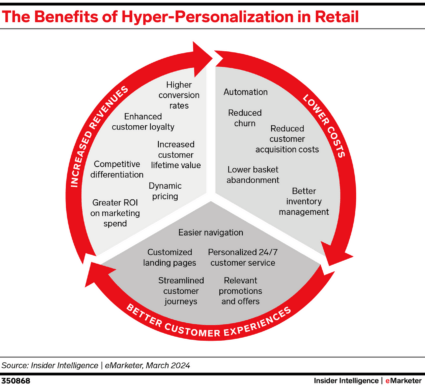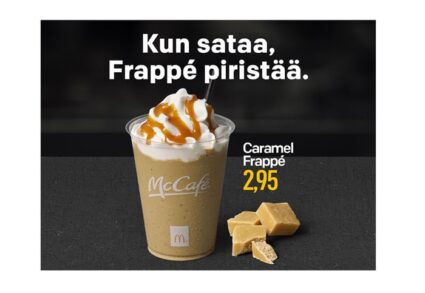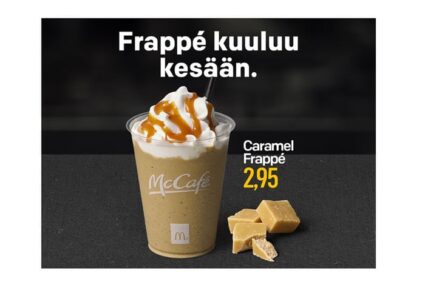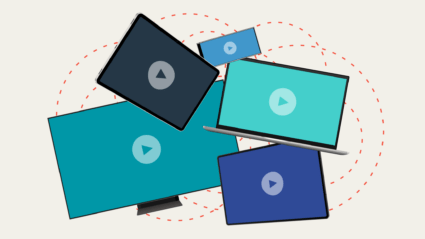It’s no secret that AI is reshaping the marketing industry. But not all applications of this technology are created equal–you need to choose the AI investments that will make the biggest impact on your business.
That’s where hyper-personalization comes in. In 2025’s competitive market, a great product isn’t enough; to break through the noise, you need to offer your customers personalized, meaningful experiences.
So how can AI-powered personalization supercharge your marketing efforts? Let’s start by getting the fundamentals straight.
What is AI personalization?
Personalization is not a new concept: traditionally, businesses have used simple customer data and historical information like purchase history, customer name, age, and more to personalize user experiences.
AI takes that a step further. With these new tools, brands can leverage real-time data and factors like location, time of day, and even the weather (more on that in the next section) to deliver hyper-personalized experiences, ads, and recommendations.
By tailoring marketing to individual users and circumstances, brands can make more meaningful connections with customers, driving loyalty and engagement. Personalized marketing zeros in on impactful activations, which can raise revenues even as it lowers costs by cutting down on less-specialized mass promotions.
-

Source: eMarketer
According to a survey from Coveo and the Retail Systems Research, 70% of US retailers said they will spend less on mass market promotions but still expect to increase sales through personalized offers over the next two years.
Customers also indicate that this kind of personalization improves the shopping experience. 80% of consumers globally said they think personalized product recommendations are “cool,” according to a survey by Marigold and Econsultancy.
With so many benefits, it’s no wonder that, when Wpromote asked marketing leaders about their predictions for 2025, they pointed to AI-powered personalization as one of the biggest opportunities this year.
Roberto Gennaro, Chief Digital and Innovation Officer at redtag.ca, said: “As platforms like ChatGPT, Perplexity, and Gemini gain traction, we’re going to see personalized marketing evolve to new levels where interactions feel more intuitive and tailored. The ability to engage with consumers in real time through these AI tools will redefine the standard for customer experience, making marketing more precise, responsive, and impactful.”
Where to use hyper-personalization in your strategy
AI’s ability to analyze vast amounts of data and consumer behavior makes it possible to personalize at scale, including tailored personalized shopping experiences, dynamic social ads, and out-of-home (OOH) campaigns.
Personalized shopping experiences
One of the best applications for hyper-personalization is optimizing the shopping experience, which can both engage customers and boost sales. According to a survey by Rokt and The Harris Poll, 88% of Gen Zers believe AI could improve online shopping with updates like relevant offers, product suggestions, and personalized assistance.
This isn’t a future state: you have the power to update landing pages with tailored experiences to help your customers get the most out of your website right now. Here are some ideas to get you started:
- Dynamic: A visitor from New York might see an image of a local landmark on the landing page, along with a tailored CTA like “Shop our NYC Collection.”
- Behavioral: A user who has been browsing sneakers could be shown a personalized landing page highlighting the latest sneaker arrivals, sales, or recommendations.
- Predictive: If a user has previously purchased skincare products, AI can predict they may be interested in a new line of products and present them prominently on the landing page.
Shoe retailer vanHaren has seen major success leveraging personalized product recommendations. The brand used AI to change its recommended products based on individualized variables including the user’s local weather and time.
Dynamic social ads
You don’t have to wait until someone gets to your site to start personalizing their experience with your brand. With gen AI, marketers can dynamically update ads in real time to account for a particular customer’s circumstances or new product arrivals and promotions.
We partner with Smartly to update ads automatically, adding different text over images or changing visuals to personalize them for different users. Instead of manually changing assets, you can use the same creative across all variations while AI does the work for you.
For example, if you have separate ad sets targeting audiences in LA and Dallas, you can dynamically add “Hey LA” to ads serving in LA and “Hey Dallas” to people in Dallas. It’s kind of like magic.
Brands can also dynamically update visuals. A hotel brand could set ads to change backgrounds based on location, so the Eiffel Tower appears in an ad for a Paris property, while a London hotel shows Big Ben.
-

Rainy Version: “When it rains, Frappé cheers you up.” Source: Smartly
-

Sunny Version: “Frappé is a part of summer.” Source: Smartly
You can also update ads based on changing inventory and promotions. If you have “New Arrivals” in your feed, you could add a dynamic overlay that advertises “New Arrivals” on your new products.
You can also update ads based on changing inventory and promotions. If you have new products in your feed, you could add a dynamic overlay that calls out those “New Arrivals” to get people excited to click and buy.
Optimized out-of-home (OOH) campaigns
These dynamic features aren’t limited to the small screen–they can also be used to optimize out-of-home ads. OOH campaigns can serve specific ads to audiences based on on-the-ground conditions like traffic, time of day, neighborhood, and more.
A good example of these real-time updates is PODS’ OOH campaign that uses dynamic copy to update digital signs on trucks. The team used generative AI to create thousands of lines of tailored copy that showed up on billboards as trucks passed through different New York City neighborhoods based on what was happening in those locations.
Their inventive approach drove a huge spike in brand interest; website sessions went up 60%.
Getting started with AI-powered personalization
Ready to jump into AI personalization? You’ll need to start with a good foundation.
Personalized marketing is only as strong as the data you have to back it up. You can’t build dynamic content and experiences that actually resonate with your customers, without a strong understanding of your audience.
That starts with the right data, including:
- Behavioral: website visits and browsing history
- Demographic: age, gender, location
- Transaction: past purchases and average spend
- Engagement: shares and comments on social media
You can then use AI technologies to analyze these massive data sets to predict customer preferences and decision-making, then generate personalized content based on your findings.
Once you have personalized experiences in place, remember that those initial efforts are only the beginning. To get the most out of hyper-personalization, you need to keep track of results and continuously adjust and improve your marketing based on new insights.
You should also keep the limitations of AI-powered personalization in mind. This kind of marketing can be a balancing act: while many customers enjoy optimized shopping experiences, it’s easy to turn them off with content that feels a little too personal. It’s worth noting that two-thirds of consumers surveyed by Boston Consulting Group said they’d had at least one negative personalized experience that led them to end an interaction with a brand.
That’s why customer privacy needs to be top of mind when leveraging AI innovations. Make sure you have strong policies in place to follow privacy regulations and protect your audience’s information.
With the right planning, you can use AI personalization to boost your creativity and efficiency while staying true to your brand and maintaining your customers’ trust.







Responses